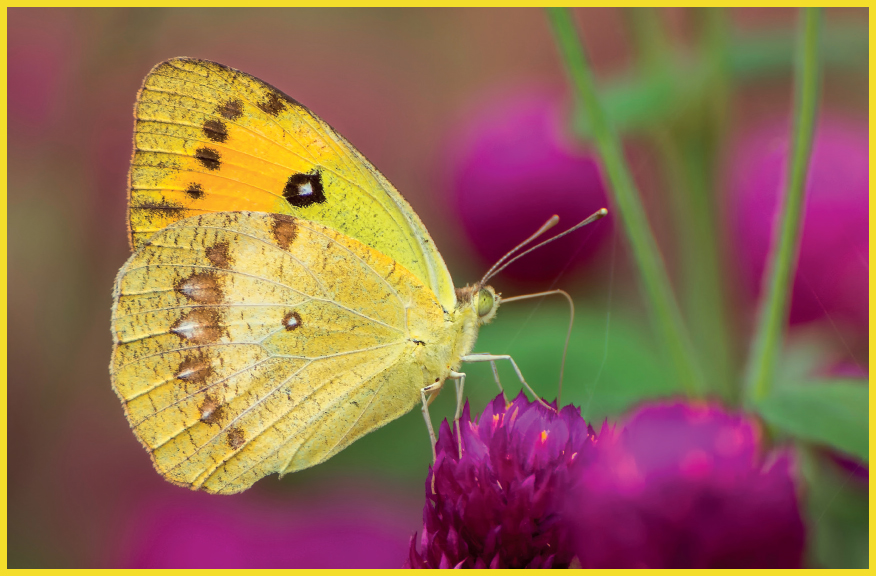
Clouded yellow (Colias croceus) nectaring.

Clouded yellow (Colias croceus) nectaring.
Although their role is often ignored, many of the 180,000 species of butterflies and moths (collectively making up the insect order Lepidoptera) are important pollinators. Butterflies fly by day and include some of the most beautiful and brightly coloured insects. Many moths are also active by day, but most are strictly nocturnal. The wings and bodies of butterflies and moths are covered with tiny scales, which give them their coloration. The vast majority have four wings and drink nectar using a long proboscis.
All practice complete metamorphosis, with eggs hatching into larvae, or caterpillars, then becoming pupae before emerging as flying adults. The female lays eggs on a host plant, which becomes a food plant when the caterpillars hatch. They are “eating machines” and some damage crops. Some butterflies and moths are very choosy about the plant they lay their eggs on; if that plant isn’t present in an area, neither will be the butterfly. Other species lay on a wide range of plants. After pupation, the next generation of adults emerges. Many butterflies and moths visit flowers to collect nectar and in so doing they unwittingly transfer pollen and facilitate pollination. They tend not to be so fussy with their nectar requirements as their caterpillars are with feeding needs. Some don’t eat at all, relying on stored fat and flying for only a short time.